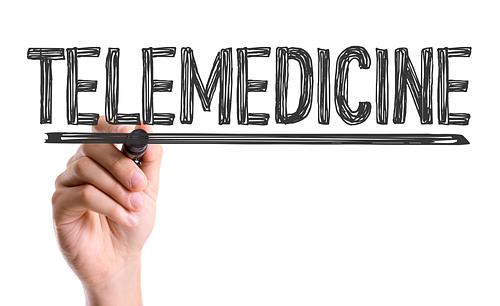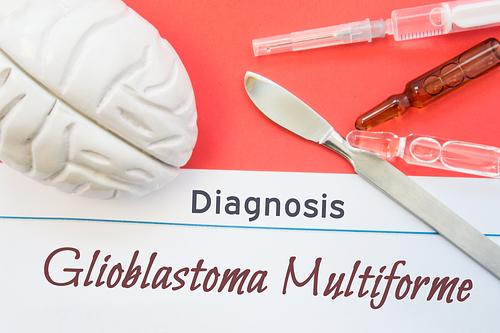How To Prepare to Take Your Certification Exam
So you’re about to graduate from Nursing School as a Nurse Practitioner. Now what? Get
excited- it’s time for more studying and planning to sit for your national certification test!
Wohoo, I know you’re just thrilled about that, and I’m here to give you some tips before you
take your test! A little context for this article, I recently graduated from Vanderbilt’s School of
Nursing with my Master’s of Science, and a focus in Family/Primary Care. I’m coming at you
from the perspective of someone who just sat for her FNP boards, but these steps can be
applied to any discipline!
Step 1: The Certifying Bodies- AANP vs. ANCC
There are two certifying bodies available to those who wish to become a Family Nurse
Practitioner- The American Academy of Nurse Practitioners (AANP) and The American Nurses
Credentialing Center (ANCC). Both are well established organizations catering to the primary
care discipline of nurse practitioners, and are widely accepted at clinics and hospitals across the
united states. Personally, I recently took ANCC’s certification exam, but many of my peers took
AANP- ultimately it’s what you prefer!
Step 2: Decide Which Certification- C vs. BC
The AANP does differ from the ANCC, so I’m here to give you a quick run-down of the
differences, but I encourage you to do your own research as well. For starters, the credentialing
between the two certifying bodies is slightly different. The AANP offers the credentialing of “C”
meaning certified, while the ANCC offers the credentialing of “BC” meaning board-certified.
Having a “C” after your name versus having a “BC” after your name does not make a difference,
it is just how they distinguish themselves from one another. At the end of the day, both the
AANP and the ANCC test you on the same material being the entry-level practice questions as
an Advanced Practice Registered Nurse.
While the specific content on primary care does not differ (as we all learn the same things and
treat the same conditions), the number of questions does differ. The ANCC test will have 175
questions (of which 25 are pretest) and the AANP will have 150 questions (15 of which are
pretest). Both require a certain competency level to pass (somewhere around 70% or more
correct). In addition to the normal multiple choice questions, the ANCC also has ranking
questions, pictures/illustrations, and matching problems to assess critical thinking skills.
Another key difference between the two exams is the ANCC will test on ethical problems in
practice whereas the AANP does not cover professional issues such as ethics.
Again, I encourage each of you to do research on your own and take as many *free* practice
questions from the AANP and ANCC as you can to get a feel of how they ask their questions,
and make a decision from there!
Step 3: Apply to the Certifying Body
Now you’ve decided which exam you’re taking, it’s time to apply to the respective certifying
body! Both organizations encourage their test takers to apply 3-4 weeks before graduation and
completing the required clinical hours as the application process can take 3 weeks (or more) for
approval (especially with COVID-19). Each individual website lays out the specific details as to
the forms needed to apply for their certification exam. Once you have your application in, it
becomes a waiting game. Both the AANP and ANCC will let you know once your application is
approved via email and this note allows you to register to sit for your actual exam on the date
of your choosing. Be smart about the date and time you choose to take the exam, and be sure
to give yourself ample time to study the material beforehand.
Step 4: Research Your Resources
Your application is in and you’re ready to start studying! First, I would encourage you to look at
the resources available to you (for free and to buy). A simply google search of “FNP board exam
materials” will bring up many to choose from! There are a TON out there and the best thing to
do is to ask your professors, other peers, and those who have taken the exam within the last
few years what resources they used to study. You might even be able to buy a used study
resource (which are still completely relevant for testing material).
Step 5: Create a Study Plan
Once you know which resources you plan to use (live review course, on-demand courses,
review books, question banks), it’s time to set your study schedule. It is recommended to begin
studying for your boards at 2-3 months in advance so no cramming occurs. My best advice is to
gather the resources you desire to use, and make a schedule off of that. Dedicate 2-4 hours a
day to studying (depending on the time you have) and be consistent with what you decide to
do! Be sure to take weekends off to let your mind rest, and try to mix questions in with the
content you’re reviewing. I personally would review a certain content section and then take
about 50 practice questions on that specific material as a way to test my knowledge of what I
recently reviewed.
Step 6: Study, Study, Study!
You’ve made the study plan, now it’s time to stick to the schedule. You got this! Be sure to get
up in between your studying and stretch, drink some water, get a snack, and reset before you
continue on. It’s best to break the studying up into smaller more palatable chunks than to sit
down for 4 hours at a time to study information.
Step 7: Self-Care Tips and Tricks
Life isn’t just about studying. It is just as important to take time for yourself during this season
of preparing to take your certification exam. Have patience with yourself and allow grace for
days when you study less than intended or when something else comes up. Your schooling has
prepared you well for this exam, and I am confident with the right study schedule you will pass
on the first try! Make time for the things you enjoy even while you study. Plan a vacation and
leave the books at home! Get some exercise each day even while you study! Whatever fills your
cup, do that!
Step 8: The Day Before Your Exam
You’ve studied, you’ve prepared, you’re ready to take this test. The day before your exam do as
little studying as possible. At this point you either know the material or you don’t- you’re not
going to learn anything new in the last 24 hours. So be confident and take this day to do
whatever brings you joy and peace. Maybe that’s getting your nails done, going for a run,
playing a round of golf, or meeting your friends for dinner. Whatever it is, have the knowledge
you have studied well and you’re prepared. Eat a good dinner, stay hydrated, and sleep 8 hours
before your exam.
Step 9: Day of Tips and Tricks
Your alarm goes off and it’s the day of your test. In a few short hours you will officially be
certified! Go through your normal routine the day of the exam. If your normal routine is getting
up and going to the gym- do that! If it’s getting up and reading your Bible or journaling with a
cup of coffee- make time for that! It’s important to complete your normal routine to get you in
the right mindset of taking your exam. Be sure to eat a good breakfast (or whatever you
normally do) and drink water. I encourage you to arrive to your testing center at least 30
minutes prior to your exam time with water, a snack, and your driver’s license to allow ample
time for check-in and security clearance. Say a prayer, think happy thoughts, and ask your
friends to send you good vibes- you got this.
Step 10: You Passed! Celebrate!
2+ hours later and you’ve answered all 150 or 175 questions and it’s the moment of truth. You
passed! Now it’s time to kick back, throw your papers in the air, and celebrate because YOU DID
IT. However you celebrate, celebrate well and be proud of yourself. This is no easy
accomplishment and you worked hard for this certification.
About the Author:
Kayla Sangrey
Kayla has been an APPAA contributor since 2020. Kayla recently graduated from Vanderbilt University and specialized in Family Medicine.

.jpg)









